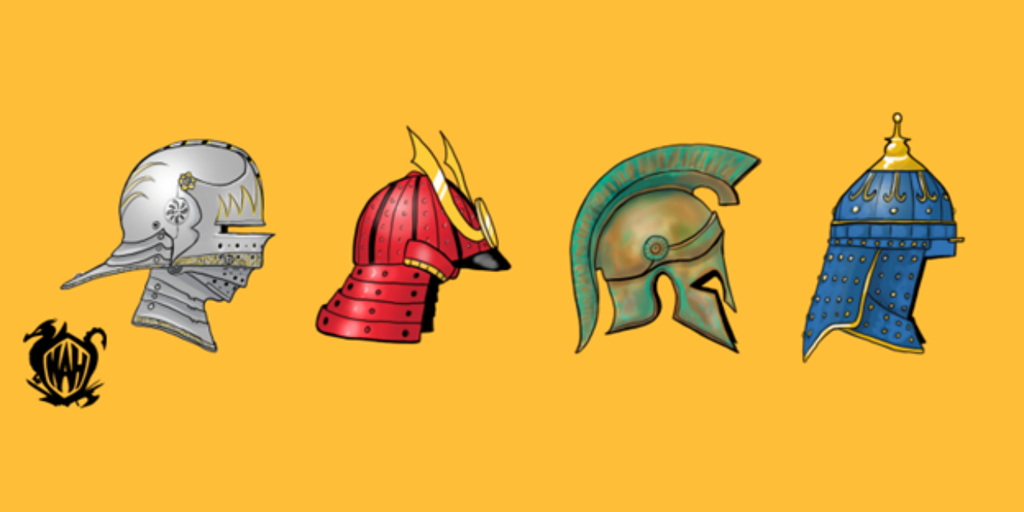Since non-fungible tokens (NFTs) first appeared, the majority of attention has focused on their role in the multimillion-dollar digital art market.
But now, NFTs are exploring new avenues. The Knights Who Say Nah is a pioneering NFT project, billing itself as a “multi-platform media company.” Its aim is to combine narrative storytelling, profile pictures (PFPs), a decentralized autonomous organization (DAO) and real historical artifacts to create a new model for history and heritage.
Over several weeks, The Knights Who Say Nah will release PFPs based on ancient warriors and 3D renderings of arms and armor scanned using photogrammetry. Its mission is to digitize, collect and curate historical arms and armor—all governed through a DAO that will control the project’s treasury.
At its heart is a collection of NFTs that represent historical artifacts drawn from a private collection housing more than 6,000 artifacts from 50 cultures, representing 6,000 years of history. Nick Richey, ‘Keeper of Arms’ of the collection, wanted to find a creative way to share these pieces with the public.
Despite their outstanding aesthetics and historical value, arms and armor have no spotlight on them, Richey explained. “When you go to a museum, the arms and armor department’s probably one of the last places you go,” he told Decrypt.
But that relative indifference is at odds with their cultural impact. They’re seen on screen in films such as “The Northman” and “The Last Duel”; in TV shows like “Vikings”; and even in video games like “Assassin’s Creed.” Their influence is felt in the fantasy shows that currently dominate pop culture, like “House of the Dragon” and “The Rings of Power.”
In a way, Richey said, arms and armor are like IRL NFTs; they have traits of varying rarity, they’re unique, and they carry a wealth of history and narrative.
“Not only are there treasures underneath these objects, but then it also starts to unravel the story. You’re starting to pull the string and then you start to look into—well, why was this design on this sword?,” Richey said. “You just start to dig in and you start to learn about these people and how we’re connected to them.”
The Knights Who Say Nah wants to explore those hidden narratives masterfully crafted hundreds or thousands of years ago and bring them to our generation while ensuring their permanence for future generations. Here’s how they’re planning to go about it.
Narrative-driven drops
The Knights Who Say Nah will kick off with an initial drop of 1,111 generative PFPs. Each drop represents different groups of ancient warriors; the first culture to be released is the ancient samurai of Japan.
PFP drops will be followed by a series of NFTs of 3D artifacts pertaining to that culture. That means in the week following the samurai PFP release, you can expect to see NFTs of real samurai swords like katana and tanto, hundreds—and in some cases thousands—of years old..
Step 1 in the photogrammetry process is to have our photographers take pictures 360 degrees around the model
In this case we had to manually turn the pedestal 100 times per angle to capture the samurai armor. We ended up with over 300 photos! pic.twitter.com/5DlilwW0dz
— Knights Who Say Nah (@KnightsSayNah) October 3, 2022
Those objects are scanned using a painstaking process known as photogrammetry, in which hundreds of photos are taken of the object from various angles and in exacting light conditions. The photos are then layered over a 3D mesh that’s tweaked to match the dimensions of the real object, and tweaked so that the lighting is consistent across the whole object. “It’s like a 12-step process that takes up to 40 hours per object,” said Richey, adding that in future, NFT holders could be able to 3D print a copy of the object.
3D photogrammetry is used to scan the artifacts. Image: Knights Who Say Nah
Richey wants to push the cultural reach of the project as much as he can. An experienced screenwriter, he’s currently creating elaborate scripts and character arcs for the ancient warriors depicted throughout the project—all of whom are based on real historical figures, like like Tomoe Gozen, a female samurai from the late Heian period of Japanese history.
“We’ll release those to our community so they can read them episode by episode,” he said, adding that he’s also pitching the project to various TV and animation studios. “Ideally, I’m going to go to the Adult Swim world and try to find a partner. If Knights doesn’t find a partner, there’s also the Web3 space,” he added, pointing to the example of NFT series like Ashton Kutcher and Mila Kunis’ Stoner Cats.
The heritage DAO
Knights Who Say Nah isn’t just about presenting a collection in a new way; it’s also aiming to evolve into a heritage DAO, in which Knights NFT holders will vote on how to curate the digital collection, and even what new pieces to acquire on the open market.
Once the DAO acquires pieces, Richey has an ambitious plan in mind: 3D-scan the physical artifacts and then donate these physical artifacts to the communities from which they originate. With museums around the world grappling with their colonial legacies and the various claims on the artifacts in their collections, it’s a novel approach.
This is one of the reasons the Knights exist! To create new ways for people to appreciate cultural artifacts, and help museums use this technology to do so as well! https://t.co/SPyFZGRoMu
— Knights Who Say Nah (@KnightsSayNah) October 1, 2022
Museums could, he suggested, hold 3D printed versions of the artifacts while the objects themselves are returned to the tribes or nations from which they originated. They could even form revenue streams, with objects being licensed to video games or metaverse platforms. “It’s not just about you making money, it’s about the project having a treasury so that we can give back to these cultures,” Richey explained.
An ambitious plan, of course, but Richey is ambitious. And he knows that Web3 is a bold experimental space.
“Imagine being someone in our community that owns this gothic warhammer NFT,” he said. “You get to go to the Metropolitan Museum and you can see it’s been donated by the Knights Who Say Nah and you’re holding your AR version in front of the real thing. It’d be pretty cool.”
The Knights Who Say Nah will be launching with a one-of-a-kind artifact NFT in early November. Follow them on Twitter for updates.
Sponsored post by Knights Who Say Nah
This sponsored article was created by Decrypt Studio. Learn More about partnering with Decrypt Studio.
Stay on top of crypto news, get daily updates in your inbox.
Source: https://decrypt.co/112274/the-knights-who-say-nah-are-turning-historical-artifacts-into-nfts



